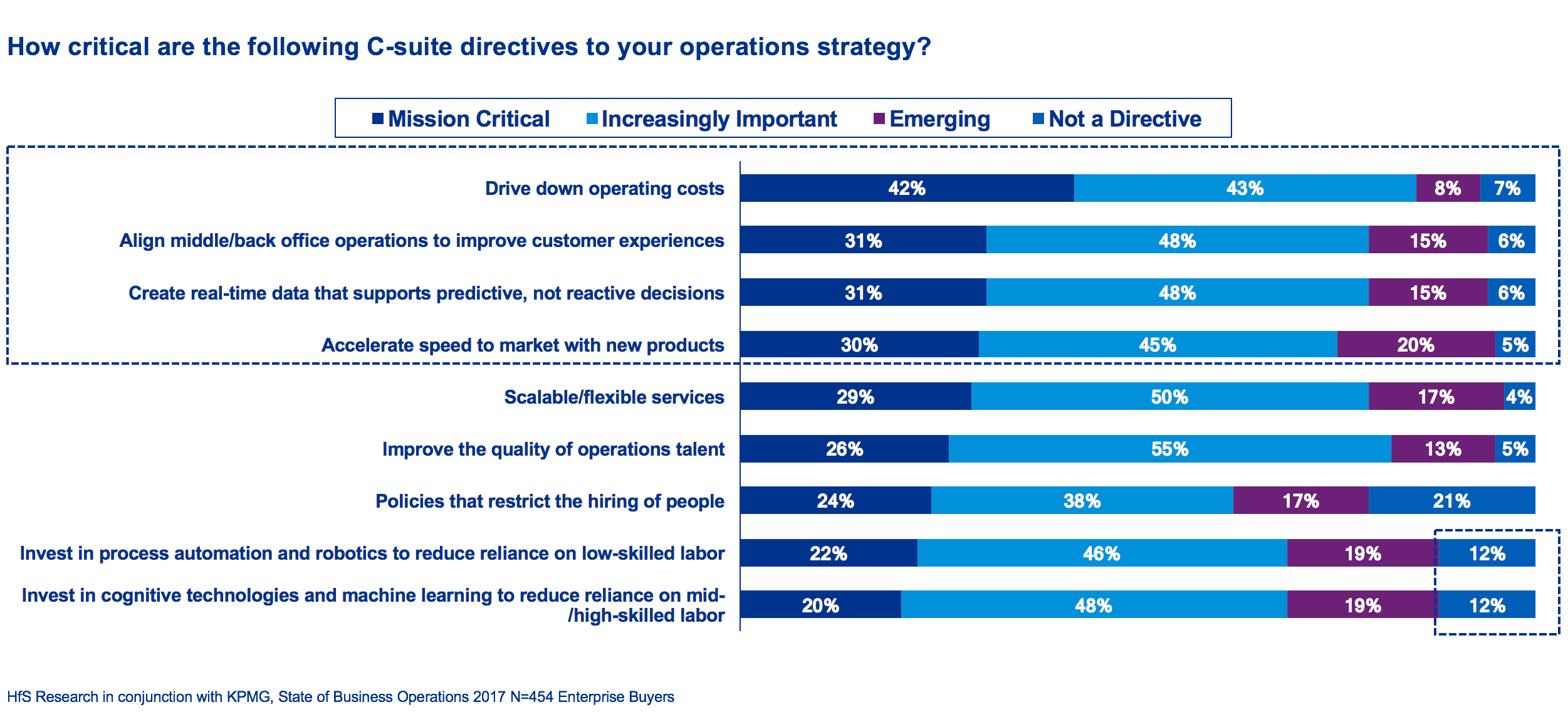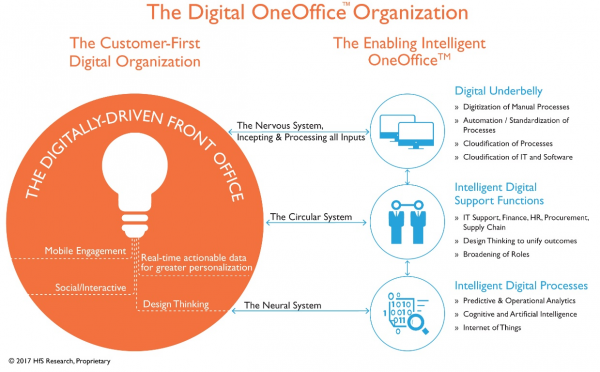Over the last few years, it’s been almost impossible to attend an IT Operations conference without Enterprise Service Management (ESM) taking up more than its fair share of the agenda. Before joining HfS, I’d spent about four years covering the trend in its various forms as both a practitioner and an analyst. So it came as a bit of a surprise to see such a huge gap between the businesses I’m covering now to those I had in my previous role.
For the clients and companies I follow now, trends like ESM and Shared Services are old hat – they’ve moved on to other more advanced forms of aligning business services. Whereas for those I worked with in my former role, the trend is only really starting to take shape now.
To best exemplify this difference between organisations, I’ll tell a quick story about the last presentation I gave before joining HfS.
At an ITSM conference at the start of the year, I took to the stage to deliver a presentation using the huge amount of data I’d collected over the years to paint a picture of trends in the industry, one of which happened to be ESM. I argued that by the end of the year up to 85% of organisations will be exhibiting some form of it – from simply sharing best practice right through to the formation of single shared service centres. The audience responded to the prediction with a few reassuring nods. Crucially, no-one chased me off the stage, although a few did come up after the presentation to utter “that was brave” before patting me on the back and walking off.
Ultimately, though, I stand by the prediction, and I continue to do so in the safe harbors of HfS, the home of the Digital OneOffice™ concept. According to HfS experts, ESM is just one fundamental of the framework. A stop on a much larger journey to truly embrace digital transformation. In support of this, they have plenty of data and analysis which, by happy coincidence supports my “brave” prediction. We can pool the dynamics into two camps – which for anyone with a passing interest in economics will recognise: Supply and Demand.
Demand: Business leaders see greater back-office alignment as critical to their success
First of all, we have demand, and this demand is coming right from business leaders at the top. HfS research shows that there is a considerable appetite amongst leaders for improved alignment of business services so much so that it’s considered to be mission critical by 31% of executives, while 48% believe it to be of increasing importance. While the evidence suggests lower ends of the senior leadership team are embracing it with the same vigor, it’s more than reasonable to suggest the demand at the C-Level will have a considerable impact on the shaping of the modern business environment.

Supply: Providers are shoring up their brains and brawn to build services that deliver greater alignment
Encouragingly, we’re also starting to see evolution in the business services supplier ecosystem. Take Atos’ recent acquisition of Engage ESM – a specialist provider in the field of enterprise service management technology and consultancy – that will add the brains and brawn of 150 ESM specialists to their offering.
Similarly, take the ambitions of ServiceNow to carve up a much larger chunk of business services. Launching from its stable footing in the ITSM space and no doubt leveraging it’s almost ubiquitous partnering of all large IT Service Providers to build a value proposition that takes what it does best in IT and apply it to the rest of the back office.
I have no doubt we’ll soon see even more providers aiming to match their services with the increased business demand.
Bigger Picture: We’ve got to get this right!
Outside of the evolution of supply and demand dynamics, there’s a much greater force at play – the drive towards a digital economy. The source of pressure on modern businesses that will see some succeed and others fail. Crucially, intelligent and aligned business services are the backbone of successful digital transformation.
For some of the organisations I have met over the years, truly aligning back-office services sounds like a pipe dream. However, for HfS, the thought leaders who designed the Digital OneOffice framework, the roadmap is clear, and if businesses want to survive in the modern digital economy, they must get their back office ducks in a row. Without back office alignment, it won’t be a robust enough platform to provide the agility needed in the digital world. By using technologies and providers of analytics, automation and the digitisation of resources and processes, businesses can break down siloed legacy operations to build efficient end-to-end business processes – the perfect platform for business agility and innovation.

So hopefully, the bold prediction I made a few months ago isn’t way off the mark. At least that is assuming businesses don’t swiftly change their minds and yearn for a siloed back office, supporting traditional communication channels and processes because “we’ve always done it this way”. Nevertheless, in a year were political pollsters and researchers have been just as surprised by the results as the winners, I may hold back on celebrating for a little while yet.
Bottom Line: Aligned Business Services are the backbone of the Digital OneOffice – companies need to get this right to survive in the digital economy.
Posted in : OneOffice






